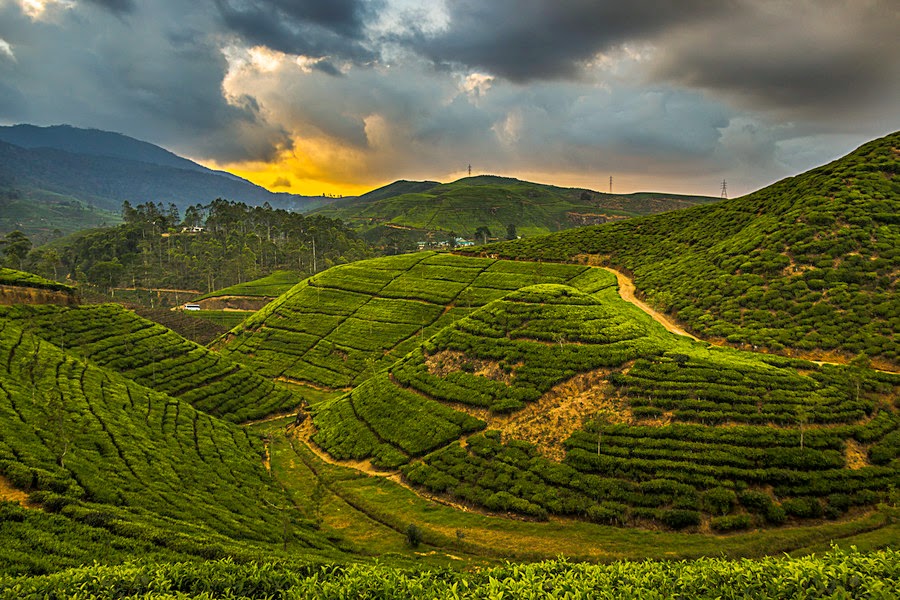It is the second-largest city of the island and the capital of Central
Province of modern Sri Lanka. Its geographic location has made it a
major transportation hub in the island: while Kandy being the gateway to
the Central Highlands
of Sri Lanka, the city can be reached by major motorways in every
direction of the island. The railway line from Colombo, the sea port on
the western coast runs via Kandy to the farthest point of Badulla
in the Central Highlands.
The main roads Colombo-Kandy and Kandy-Nuwara Eliya
are two of the most scenic roads of Sri Lanka; Colombo-Kandy
road passes through rubber plantations and rice paddies, Kandy-Nuwara
Eliya road cuts through paddy fields and seamless tea plantations. Both
roads claw their way up winding, rounding over the rings of hills.
You can visit bellow places in Kandy city and nearby the city.
- Palace of the Tooth relic

The monumental ensemble of Kandy is an example of construction that associates the Royal Palace and The Temple of the Tooth (
Palace of the tooth relic) is the place that houses the Relic of the tooth of the Buddha.
Originally part of the Royal Palace complex of the Kandyan Kingdom, it
is one of the holiest places of worship and pilgrimage for Buddhist
around the world. It was last of a series of temples built in the places
where the relic, the actual palladium of the Sinhalese monarchy, was
brought following the various relocations of the capital city.
The Palace of the Tooth relic, the palace complex and the holy city
of Kandy are associated with the history of the dissemination of
Buddhism. The temple is the product of the last peregrination of the relic of the tooth of Buddha and the testimony of a religion which continues to be practiced today.
-
-
-
-
-
- Royal Palace
The Royal Palace of Kandy
is the last Royal Palace built in the island. Although only part of the
original palace complex remain. The Temple of the Tooth was part of
this complex, due to the ancient tradition that stated that the monarch
is the protector of the relic though which the ruler of the land. It
today houses the National Museum Kandy which holds an extensive collection of artifacts from both the Kandy Kingdom and the British colonial rule.
- Lankatilaka Temple
The Lankatilaka Temple is considered to be one of the best preserved
examples of traditional Sinhalese temple architecture. Built on a rock,
the temple is reached by a long series of rock cut steps. An arched
passage of the image house leads through a Mandapa (hall) into the inner
sanctum which is richly decorated with beautiful floral designs. The
two side walls and the ceiling are decorated with paintings. In the
inner sanctum is a colossal seated image of the Buddha.
- Gadaladeniya Temple
The Gadaladeniya Temple's design is of South Indian origin with a Devale
attached to it, similar in character to the Natha Devale and the Gedige
of Adahana Maluwa. The main shrine room has a seated Buddha statue and
the remains of some paintings of the Gampola period.
Among other important temples around Kandy are Dodanwela Devale (shrine), Embakke Devale (shrine), Galmaduwa
Vihara temple, Handagala Vihara temple, Lankatilaka Vihara, Medawala
Vihara and Nalanda Gedige.
Not only that places you can visit hanthana mountain range and knuckles mountain range also those places are in 1600fts above from sea level.
(Source - From Wikipedia)











.jpg)
























































